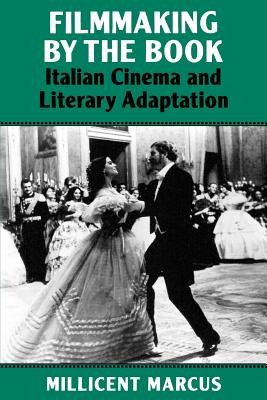
- We will send in 10–14 business days.
- Author: Millicent Marcus
- Publisher: Johns Hopkins University Press
- ISBN-10: 080184455X
- ISBN-13: 9780801844553
- Format: 14.9 x 22.6 x 2.1 cm, softcover
- Language: English
- SAVE -10% with code: EXTRA
Reviews
Description
What is the impulse to transform literary narrative into cinematic discourse, and what are the factors that determine that transformation? In Filmmaking by the Book, Millicent Marcus considers the adaptive process as the sum total of a series of encounters: the institutional encounter between literary and film cultures, the semiotic encounter between two very different signifying systems, and the personal encounter between author and filmmaker--sometimes involving an overt Oedipal struggle for selfhood.
Marcus explores that process by looking at key works by such major postwar Italian filmmakers as Visconti, De Sica, Pasolini, Fellini, and the Taviani brothers. Drawing on the methodologies of semiotics, psychoanalysis, feminism, and ideological criticism, she finds that cinematic imaginations typically employ literary texts self-consciously to resolve specific artistic problems. Each of the filmmakers studied here define their own authorial task in relation to that of the literary precursor, and insert "umbilical" scenes or "allegories of adaptation" to teach viewers how to read their cinematic rewriting of literary sources.
EXTRA 10 % discount with code: EXTRA
The promotion ends in 20d.06:54:55
The discount code is valid when purchasing from 10 €. Discounts do not stack.
- Author: Millicent Marcus
- Publisher: Johns Hopkins University Press
- ISBN-10: 080184455X
- ISBN-13: 9780801844553
- Format: 14.9 x 22.6 x 2.1 cm, softcover
- Language: English English
What is the impulse to transform literary narrative into cinematic discourse, and what are the factors that determine that transformation? In Filmmaking by the Book, Millicent Marcus considers the adaptive process as the sum total of a series of encounters: the institutional encounter between literary and film cultures, the semiotic encounter between two very different signifying systems, and the personal encounter between author and filmmaker--sometimes involving an overt Oedipal struggle for selfhood.
Marcus explores that process by looking at key works by such major postwar Italian filmmakers as Visconti, De Sica, Pasolini, Fellini, and the Taviani brothers. Drawing on the methodologies of semiotics, psychoanalysis, feminism, and ideological criticism, she finds that cinematic imaginations typically employ literary texts self-consciously to resolve specific artistic problems. Each of the filmmakers studied here define their own authorial task in relation to that of the literary precursor, and insert "umbilical" scenes or "allegories of adaptation" to teach viewers how to read their cinematic rewriting of literary sources.


Reviews